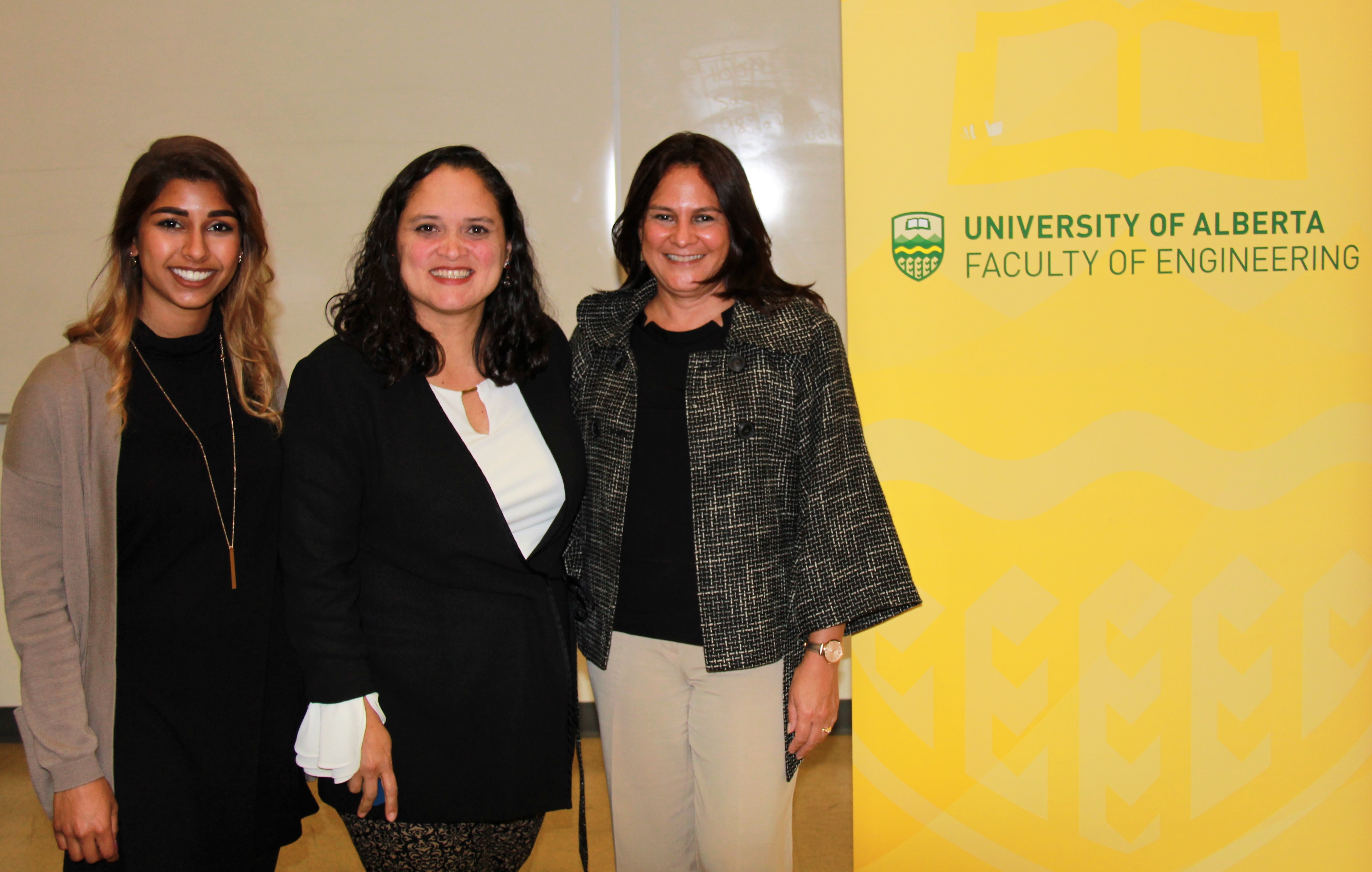
Meghana Valupadas, Claudia Gomez-Villeneuve and Ilya Espino de Marotta share their perspectives on women in engineering with University of Alberta engineering students.
(Edmonton) When engineer Martha Vega-Smith watched an Netflix documentary about the expansion of the Panama Canal, she noticed something interesting: the executive vice president of engineering for the $5.5 billion, nine-year project was a woman.
And she wore a bright pink hard hat and vest.
Despite it being a long shot, Vega-Smith reached out to the pink-clad engineer, Ilya Espino de Marotta, and asked if she would be willing to be the keynote speaker at this year's Women in Engineering Summit (WES) in Edmonton.
To her great surprise, Espino de Marotta said yes.
"It was like if Beyoncé agreed to show up at your birthday party," jokes Claudia Gomez-Villeneuve, chair of WES and an adjunct professor of engineering at the University of Alberta.
Gomez-Villeneuve launched the inaugural WES in Edmonton Sept. 14, 2018 to "create an engaging space to discuss issues and explore practical strategies toward inclusion and retention of females in the profession."
WES plans to host an annual summit from 2018 to 2030 to support Engineer Canada's 30 by 30 Initiative. The goal is to raise the percentage of newly licensed engineers and geoscientists who are women to 30 per cent by the year 2030.
Gomez-Villeneuve's mission is to convince women to enter and stay in the engineering profession. And Espino de Marotta definitely made an impact as the keynote speaker at the summit.
As vice president of engineering for the Panama Canal Expansion Project, Espino de Marotta literally moved mountains. She helped oversee the research, design, project management, community outreach and more of one of the largest engineering projects in history.
Despite being one of the world's most successful engineers, making her way onto Forbes' list of the 50 most powerful women in Central America, Espino de Marotta faced the same challenges as any other female engineer.
"I definitely faced some rejection in my career, like putting in for a promotion and I wouldn't get selected, because I was a girl. Nothing more than that," she said.
She also faced questions about her ability to take on the Panama Canal Expansion Project because of her gender.
"Some people were not convinced that I could do the job, so I decided to wear a pink hard hat just to show that yes, a girl can do the job," she explained. "It started as something I did for myself. It's become a very popular symbol so I'm happy about it because it's allowed women to pursue engineering."
Meghana Valupadas, a U of A engineering student and president of Diversity in Engineering student group, said she was inspired by the idea of the pink hard hat.
"It's really easy to fade into the shadows, to try to fit in. Especially when you're a woman in STEM, you might want to dress like the guys, talk like the guys, act like the guys, so people take you 'more seriously,'" she said.
Seeing Espino de Morotta wear the pink hard hat and embrace her gender helped Valupadas realize that she, and other female engineering students, can do all those things without fading away.
She said: "Your gender is an asset, not a barrier."
"We need women's brains in engineering," said Gomez-Villeneuve. "Men's perspective alone is not enough. Women's perspective alone is not enough. If we combined them 50-50, scientific and engineering problems could be solved like that."
To honour the valuable perspectives and expertise women bring to the engineering field, Edmonton Mayor Don Iveson proclaimed September 14, 2018 to be "Women in Engineering Day" in Alberta's capital city.